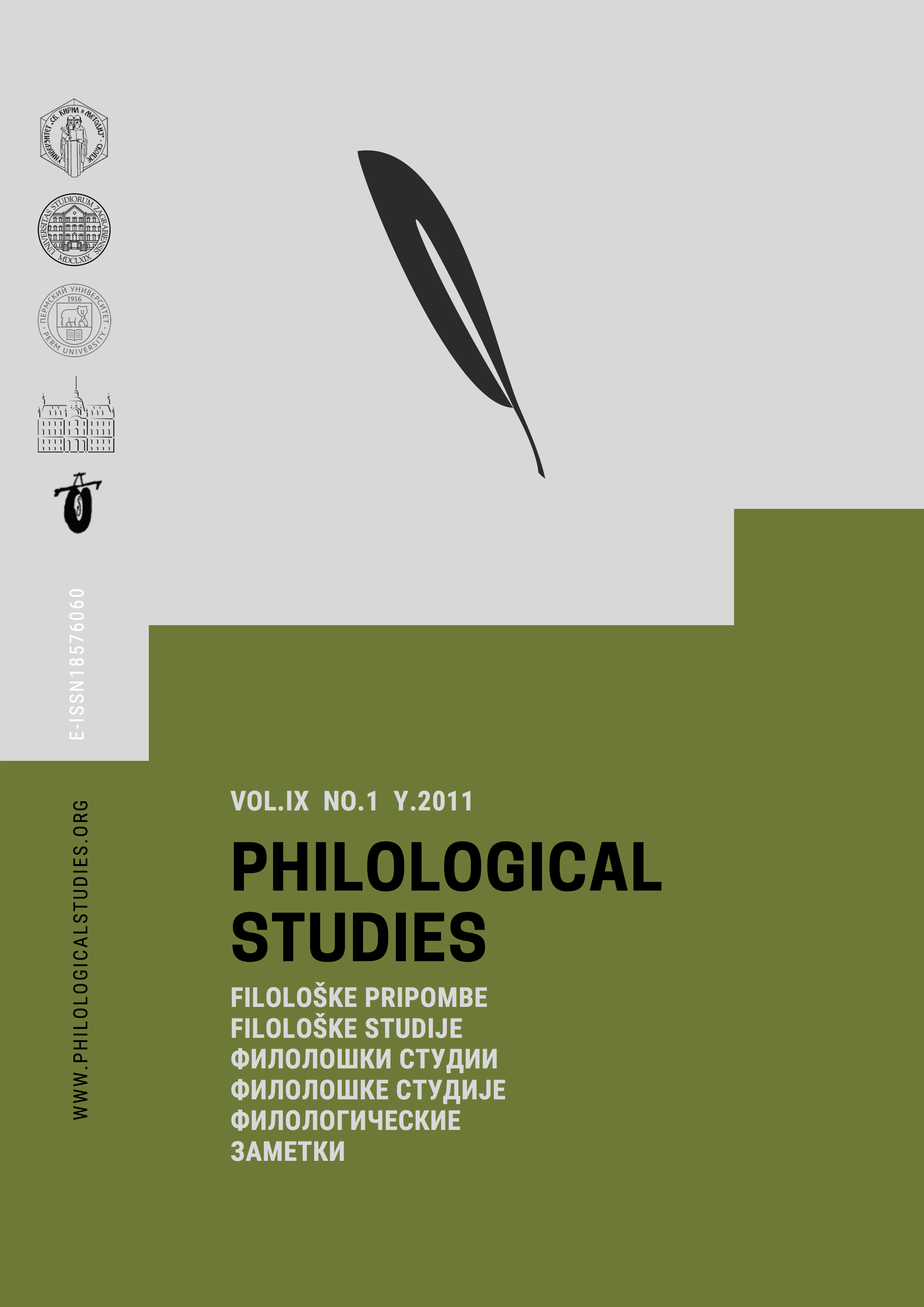GRAFIČNO-PRAVOPISNA PREDSTAVITEV SUPRASELJSKEGA ZBORNIKA V LUČI KOPITAREVEGA PREPISA IZ 1838–1840
Ključne riječi:
Codex Suprasliensis (Codex of Retko), tenth/eleventh-century Old Church Slavic Cyrillic manuscript, early Cyrillic: upright calligraphic uncial script, geometrical-woven ornament type with plant motifsSažetak
The Codex Suprasliensis—the largest Old Church Slavic Cyrillic manuscript—is a priceless asset in three European national libraries today: in the manuscript collections of the National and University Library in Ljubljana (the first 118 sheets), the Russian National Library in St. Petersburg (16 sheets), and the largest part, 151 sheets, in the National Library in Warsaw. In the Kopitar Collection of Slavic Codices, part of the National and University Library Manuscript Collection in Ljubljana, immediately following the aforementioned Ljubljana portion of the manuscript is what is known as the Kopitar Transcription of the Entire Codex Suprasliensis, which this great Slovenian Slavic specialist created between 1838 and 1840. The transcription is written in cursive Cyrillic, in rather small handwriting, but it preserves the visual image of the manuscript: the form of the column, the same line length, and all abbreviations and supralinear marks. On the edges of the text (left and right) are his comments about errors, the paleographic and orthographic characteristics of the manuscript, special linguistic aspects, interesting features, and so on. Kopitar’s manuscript marks the special use of certain graphemes; for example, ®, -, ¦, and ª, the older form of č (]), c (ч), and psi (¤), the majority of Cyrillic ligatures at the end of lines, spellings with э instead of ˙, the presence or absence of epenthetic l, and so on. The manuscript is written in an early form of Cyrillic and so quite a few graphemes have an archaic form. These clearly include the graphemes for c and č: the first is written in the Codex Suprasliensis (without any kind of shift of the lower stem to the right) entirely within a linear system (ч), whereas the form of the second is created from the first by simply shifting the lower stroke to the middle of the “cup” (]). Older forms include jat, whose stem does not extend up out of the line, but maintains the same height as the other characters in the text (ý), i (ˇ) as opposed to later (и), omega with a high middle line (w), and psi in the form of a cross (¤). The other characteristic Greek graphemes are, as expected, used for spelling foreign words and indicating numerical values (e.g., » and ż); only izhitsa (y) is also found in spellings of native words (with the phonetic value u or ′u). The codex is characterized by the use of graphemes for *ę: ® is frequent after consonants and - after vowels and at the beginning of the word, whereas the prejotated vowels (Ş and ¦) appear only sporadically. The codex uses both jers (ú in ü), often interchanging them and rarely omitting them. Among the supralinear marks, the spiritus lenis and spiritus asper predominate, both above initial vowels in a word as well as above vowels in the middle of the word. Also common are the apostrophe, which the author of the codex wrote in place of an omitted jer or full vowel, and the circumflex, which has two positions above graphemes: it either stands above the middle of a wide grapheme or digraph (above w, ą, ţ, and «) or is shifted somewhat to the right and marks the softness of the consonant preceding it (above the graphemes л, н, and р, and in foreign words above к, г, and х).
Preuzimanja
Preuzimanja
Objavljeno
Broj časopisa
Rubrika
Licenca
Autori predstavljaju časopisu originalne radove temeljene na rezultatima vlastitih istraživanja. Suautori su osobe koje su u značajnoj mjeri doprinijele radu. Autor (i suautori) šalju članak zajedno s popunjenim Prijavnim obrascem (Paper Submission Form) koji ujedno ima svrhu suglasnosti s objavljivanjem rada.
Časopis prima neobjavljene znanstvene radove. Ne primaju se članci koji u velikoj mjeri ponavljaju već objavljene radove autora. U ponavljanja se ubraja kompilacija, odnosno tekst sastavljen od isječaka iz objavljene monografije ili od isječaka iz nekoliko drugih radova. Nedopustivi su plagijati i pretjerano citiranje tuđih radova (trećina ukupnoga opsega članka, ili više). Svi citati, posuđeni ulomci i građa trebaju biti popraćeni uputnicom na izvornik, odnosno na autora i primarni izvor. U slučaju ako je udio tuđeg teksta prevelik, autoru će se preporučiti skraćivanje citata i proširenje opsega originalnoga teksta.
Autor treba dobiti sva potrebna dopuštenja za korištenje posuđene građe (ilustracije i sl.), a za koja on ne posjeduje autorska prava. Autor jamči da članak ne sadrži podatke koji nisu pogodni za javno objavljivanje, između ostaloga i tajne podatke.
Popis literature obuhvaća samo one bibliografske jedinice i poveznice koje su zaista upotrijebljene tijekom istraživanja i koje su u tekstu
Preporuka je da se u tekstu navedu podaci o financijskoj podršci provedenog istraživanja (ako ona postoji). Također se može navesti i zahvala kolegama koji su pripomogli nastanku rada, a koji nisu suautori.
Predajući uredništvu rukopis i Prijavni obrazac autor je službeno dao suglasnost da se njegov rad objavi u časopisu Filološke studije. Autor je i dalje vlasnik autorskih prava članka. Autori imaju pravo povući članak u bilo kojoj fazi njegova razmatranja (do trenutka njegove objave na internetskoj stranici) uz to da trebaju o tome pismeno obavijestiti uredništvo.
Objava članaka je besplatna. Sadržaj je dostupan uz licencu Creative Commons Attribution-Noncommercial-No Derivative Works 3.0 Unported License.


